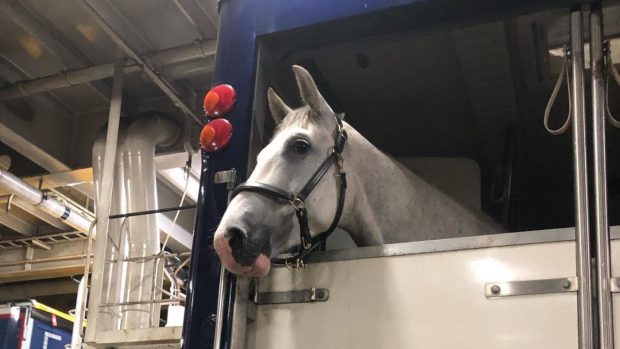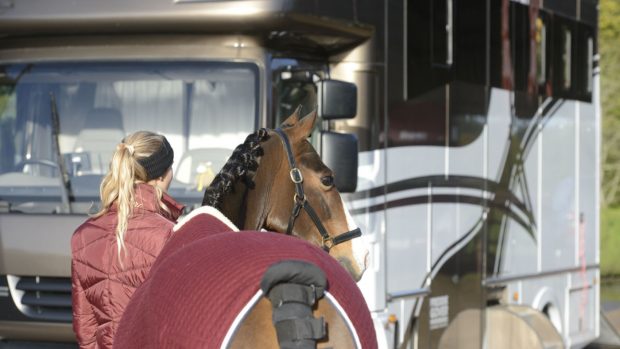Do you have problems loading your horse?
Rachel Norris from Equusense in Dorset — a centre which specialises in horses with behavioural problems — gives clear and useful advice about the techniques she recommends when teaching a reluctant horse to load.
Rachel’s main tips for loading and unloading your horse safely, and minimising frustration and stress, are:
- Always wear a hard hat, gloves and sturdy boots.
- The horse’s legs should be protected with boots — ideally sports boots — and the tail with a bandage.
- If the horse is difficult, use a pressure headcollar with a poll guard.
- Always use a longline not a lead rope.
- Establish the groundwork first, only move towards the ramp once your horse understands and respects your requests.
- Keep your body language passive and your eyes looking at the horse’s feet.
- Allow the horse time but keep the feet moving.
- Release the pressure as soon as the horse even thinks about moving towards you.
- Repetition is key.
- NOTE: If you use a pressure headcollar to load NEVER tie the horse using the training rings or any part that will pull tight. For more difficult/dangerous loaders, or horses that have a genuine fear of loading/travelling, consult an experienced professional.
This video is part of South West insurer Cornish Mutual’s “HorseSafe” campaign.
It is being run in partnership with the animal rescue team at Devon & Somerset Fire & Rescue Service to improve the safety of horses during transport.
Read more about travelling with your horse




